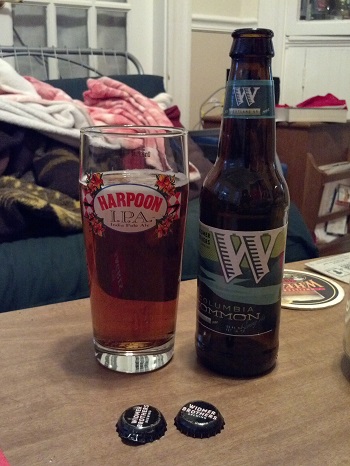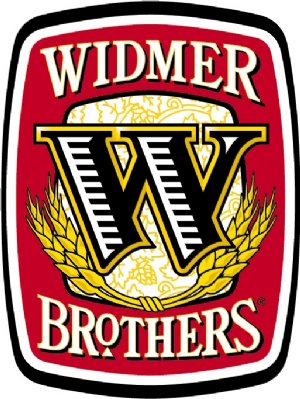Hybrids To The Rescue

Brewery and Country of Origin: Widmer Brothers Brewing Company of 929 North Russell Street, Portland, Oregon 97227, USA
Date Reviewed: 5-10-13
In an effort to bring beer drinkers variety, many breweries in hops producing countries go through the scientific process of developing new hop flowers and varieties to bring out new aromatic and flavor aspects of beers. Most breweries are content with the 80 or so varieties that are already in widespread commercial use. And others, like Widmer Brothers, do what they can to keep waning breeds from dying off completely. This is the Columbia Common, a spring seasonal beer known for its use of Columbia hops. Brought back from the bring of "extinction", the columbia hop variety is considered to be a cousin of the reginoal Willamette (Oregon) hop, a popular American family which is used in both US and British beers. The Willamette is in turn, a 1976 derivative of the English "Fuggles" hop, which many IPAs and other bitter ales are brewed with. As far as the Columbia ale is concerned, not much is known about this rare variety, other than its origin as a Willamette offshoot. Either way, this particular beer, which is brand new for spring 2013, is perhaps the best known example of the Columbia Hop in use today (and the only one we're aware of for sure). Either way, as you know, choosing the right hops for your beer is one of the most important decisions, especially if it's aimed at being the main flavor inducing ingredient. Fresh is the only way to go. And of course, you have to make sure that the hops you choose are right for the style of beer you want to make. An overly citrusy hops variety probably isn't the best choice for a sweet Milk Stout, and you're going to want a more aromatic breed if you're brewing ESB. Most beers will use more than one kind of hops (this beer uses three), and with more than 80 separate variations out there, the possibilities are indeed, endless. Brewers in climates prime for hops growing will most likely source from local farms, such in the case of Czech brewers and the Saaz Noble variety, or brewers in Germany, and their propensity to use Hallertau hops (the largest continuous hops producing region on Earth).
Date Sampled: 5-03-13 At: 7 Prescott Place, Allston, Boston, MA 02134, USA
Beer Style: Spring Ale / California Common/Steam Beer
Alcohol by Volume: 4.70%
Serving Type: 12 oz Bottle, 16 oz Stange Glass
Rating: 2.76
 Columbia Common Spring Ale
Columbia Common Spring Ale




